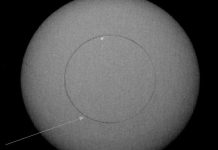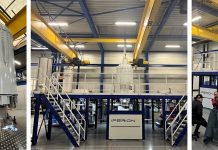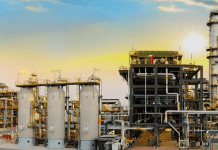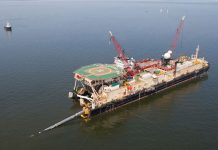Figure 1. Illustration of the WAAM Process
Article by Dr. Mike Fletcher
The majority of published documents on 3-D printing have been restricted to high precision applications, particularly in the medical sector. Whilst these examples illustrate the potential for producing small complex shapes the process is slow and expensive. Less well promoted are applications in which large engineering products using metals have been produced faster and less costly than using traditional methods such as casting and forging.
Figure 2. Propeller measuring 200 x 240 x 240 mm.
Material: 1.5125 G3Si1.
The concept of 3D printing
Several methods for 3D printing using metals are now in regular use by specialist organisations. Essentially they involve using a targeted heat source to melt or sinter metal alloys and progressively build up a complex three-dimensional shape. A computer numerical control system, usually a multi-axis robot, guides the heat source. Solid metal in the form of wire or powder is fed into and is fused by the heat source.
One version uses a laser or an electron beam as the heat source in conjunction with metal powder, Direct Metal Laser (DMLS) or Electron Beam (DMEBS) sintering. This powder technique is most effectively applied where smaller, delicate objects are required. An example is the production of body implants(1–3).
The welding version of 3D printing, Wire and Arc Additive Manufacture (WAAM), is performed by laying down progressive beads of metal (Figure 1). This technique is more suited to the production of larger and heavier engineering components as evidenced by the manufacture of marine components and airframe structures(4–6).
In terms of applications for WAAM and DMLS/DMEBS the welding version is most suitable for heavier and larger products whilst the powder alternative is best applied where smaller, delicate objects are required. In other words, welding is essentially a bulk deposition technique and powder is a precise and highly controlled process.
Examples of WAAM manufacture
Several applications of 3D production have been made and are appropriate to illustrate the potential in the marine industry. These are illustrated in Figures 2-4.
Driving forces behind WAAM development
The primary driving force behind the development is the potential to make huge savings in materials and therefore costs.
One specific area of application is in airframe manufacture. Many components are made currently by machining from a solid billet or forging, but over 50% of the original stock is lost as swarf. Another area under consideration is landing gear production where a cost saving of 70% is expected by using additive manufacturing.
Additive layer manufacturing offers several advantages for certain structural components such as a vast reduction in material wastage, especially when producing many heterogeneous parts, and the ability to produce a great variety of part designs for prototype work quickly.
There is also the key benefit that it allows the consideration of unconventional designs that otherwise would not be practical because of manufacturing or cost constraints due to, for example, complex or unusual geometries, bringing with it many different opportunities and challenges.
Early work at Cranfield University for Rolls-Royce targeted aero engine applications. Researchers here developed the wire + arc deposition process to examine the use of Inconel, titanium, aluminium and various nickel alloys. Since then the focus has shifted to airframes. Although laser and powder methods are useful for certain applications such as rapid prototyping or for small highly complex parts, this technology is limited by its speed and the size of component it can accurately manufacture. In contrast, the processes being developed at Cranfield are designed for high deposition rates.
To put this difference into context, the Cranfield centre is currently targeting a deposition rate of 10 kg/hr, compared with a typical 0.1kg/hr using laser + powder methods, which can also potentially carry the risk of the material not being fully consolidated if fusion has not occurred between grains. Additive arc + wire systems are also capable of producing parts several metres in size and simplify the process of producing single piece linear intersections.
The Damen Shipyards Group entered a cooperative consortium with RAMLAB, Promarin, Autodesk and Bureau Veritas to develop first class approved marine propellers.
The early work terminated in the production of the world’s first WAAM manufactured propeller in 2017(8). It is based on a Promarin design typically found on a Damen Stan Tug type 1606 (Figure 5).
Cost of equipment
Powder deposition technology requires a substantial metal enclosure within which all the operating system including laser (or electron beam) heat source, computer numerical control equipment and powder dispensing. A typical cost of a production system is $750,000. Wire deposition is undertaken with standard arc welding equipment coupled with a 5-axis articulated robot costing a total of $120,000(9).
Cost of consumables
Only a limited number of metallic alloy systems are currently available for additive manufacturing using powders principally Ti-6Al-4V, some stainless steels, Inconel 625/718, and Al-Si-10Mg. The cost for many stainless steels is in the region of $400/kg. Few problems remain when it comes to fusion welding and consequently an extensive variety of wire electrodes is available, most of which can be used for arc deposition. Because of the quantity of wire manufactured the cost is not high. Typically, stainless steel filler wire is readily available for $30/kg.
Deposition rate
Powder deposition rates are very low and average 0.1 kg/hr. With advancing technology this may well increase but at the present time this severely restricts applications. The wire arc process is capable of laying down 10 kg/hr of a wide range of metal alloys (Table 1).
Table 1. Comparison of Wire and Arc Additive Manufacture (WAAM) and Direct Metal Laser/Electrion Beam Sintering (DMLS/DMEBS)
WAAM |
DMLS/DMEBS |
|
| Available Range of Filler Metals | Wide All standard filler wire compositions are readily available |
Limited Powders generally need to be specially manufactured |
| Cost of Filler Metals | Low | High |
| Cost of Equipment | Low Standard GTAW plant coupled with low cost purging equipment |
High Specialist precision instrumentation necessary |
| Deposition Rate | High 10 kg/hr |
Low 0.1 kg/hr |
| Applications | Larger and heavier parts over 5 kg and above 400 mm |
Small precision objects typified by prostheses and auto/ aerospace components |
| Strenth | Generally equal to parent material strength |
Limited information avilable but generally good |
| Advantages/Disadvantages | Low cost, but post-deposit machining often necessary |
High cost, but precision deposition produces near- finished parts |
Process limitations
Many alloys may be used during the WAAM process simply by using the welding torch inert gas shroud as protection. However, some materials are much more prone to reaction with residual oxygen and this can lead to fusion zone and surface oxidation. Titanium alloys are particularly sensitive but stainless steels and many low alloy steels also demand additional inert protection.
With the electron beam process, protection is assured since operations are carried out in a vacuum. Nevertheless, this is an expensive alternative to arc welding.
Overcoming the problem of oxygen contamination
The issue of adequate protection has been resolved by developing flexible enclosures that can be purged with inert gas, usually argon. These can accommodate the entire welding equipment and robot and provide inert gas protection throughout the deposition process.
Flexible enclosure technology
There have been considerable advances in enclosure development since the concept was introduced over two decades ago. Huntingdon Fusion Techniques Ltd(10) for example has spearheaded a drive to design systems specifically for the welding industry. These innovative products offer significant attractions over both vacuum and glove box alternatives not least a significant reduction in cost.
The largest facility to date has a volume of 27 m3, adequate to accommodate all work-pieces, welding equipment and even a programmable robotic system. By purging the enclosure with inert gas, an operating oxygen content is low enough to prevent oxidation during welding and cooling.
Monitoring the oxygen content
Control and real-time monitoring of the oxygen content of the purge gas is crucial if discolouration and loss of corrosion are to be avoided.
Techniques for measuring oxygen content have been available for decades but only recently have instruments been developed specifically for welding applications. Users increasingly demand complete absence from discolouration and no loss of corrosion resistance and this implies purge gas oxygen content to be as low as 20 ppm (0.002%). Very few oxygen purge monitors are capable of meeting this sensitivity but the PurgEye (Figure 6) instruments cover all requirements.
Conclusion
A crucial benefit of 3-D printing is that it opens up possibilities for the production of complex designs that otherwise might not be practical or economic.
In terms of applications for WAAM and DMLS/DMEBS the welding version is most suitable for heavier and larger products whilst the powder alternative is best applied where smaller, delicate objects are required. In other words, welding is essentially a bulk deposition technique and powder is a precise and highly controlled process.
Many alloys need to be protected from contamination during the welding operation. The formation of metallic oxides can reduce corrosion resistance and affect mechanical properties. The use of an effective oxygen-free inert gas environment is essential.
About the Author
References
- Cancer patient receives first 3D printed sternum and rib cage. Orthopaedics and Spine, July 2017.
- Direct metal laser sintering, Bertol et al, Materials & Design, 2010.
- Laser-Based Additive Manufacturing Processes. Woodhead Publishing, 2018.
- World’s first class approved 3D printed propeller. International Institute of Marine Surveying, May 2017.
- Design for Wire and Arc Additive Layer Manufacture. Mehnen et al. 20th CIRP Design Conference, Nantes April 2010.
- Wire & Arc Additive Manufacturing. Williams et al, Materials Science & Technology 2016 Vol 32.
- Williams S. WAAM Current and Future Developments. Additive Manufacturing for Aerospace, Defence and Space conference. London, March 2016.
- Damen shipyards release further details about world’s first 3D printed propeller. 3D Printing Industry. September 2017.
- Wire+arc additive manufacturing vs. traditional machining from solid: a cost comparison. Martina F.
- Huntingdon Fusion Techniques Ltd, UK.
Acknowledgements
Figure 1, www.researchgate.net
Figures 2, 3, FIT Prototyping GmbH Germany
Figure 4, Cranfield and WAAM3D ltd waam3d.com
Figure 5, Damen Shipyards, Netherlands
Figures 6, Huntingdon Fusion Techniques Ltd, UK








